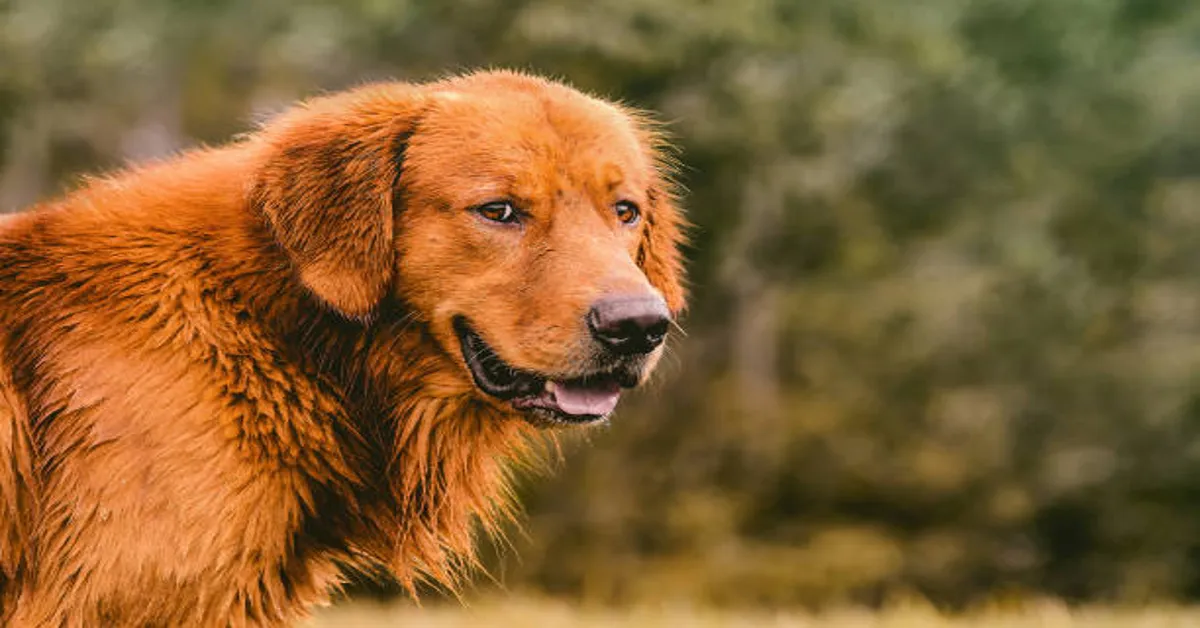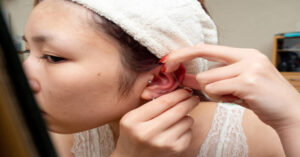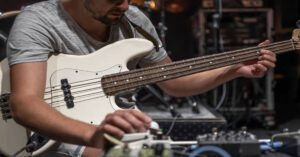Golden Retrievers have long been one of the most beloved dog breeds in the world. Known for their affectionate temperament, intelligence, and loyalty, they make excellent family companions as well as working dogs. While most people are familiar with the traditional golden-colored coats that give the breed its name, a unique variation often captures immediate attention—the Red Golden Retriever.
This variety of Golden Retriever sports a rich, mahogany or deep red coat that makes them stand out. Although they are not a separate breed, their coat color, combined with subtle physical and behavioral traits, makes them distinctive. In this article, we will take a comprehensive journey through everything you need to know about the Red Golden Retriever, from their history and genetics to their care requirements, temperament, training, diet, exercise needs, and long-term health considerations.
History and Origins of the Red Golden Retriever
The story of the Red Golden Retriever begins with the breed’s origins in Scotland during the 19th century. Golden Retrievers were developed by crossing the now-extinct Yellow Retriever with the Tweed Water Spaniel, along with later infusions of Irish Setter and Bloodhound. The aim was to create a dog that was not only a skilled retriever for hunting waterfowl but also highly trainable and gentle in temperament.
The red coloration in Golden Retrievers is strongly linked to the genes inherited from the Irish Setter. Since Irish Setters are known for their deep red coats, some of that genetic influence has persisted through generations of Golden Retrievers. While the typical Golden Retriever colors range from cream to light golden to deep golden, a subset express a darker, mahogany-red shade, giving rise to the Red Golden Retriever.
Unlike some dog types that are selectively bred into entirely separate breeds, the Red Golden Retriever is still officially recognized as a Golden Retriever by major kennel clubs. The distinction is purely aesthetic, although the coat color often coincides with subtle differences in build and personality.
Physical Appearance
Red Golden Retrievers share most of their physical traits with standard Golden Retrievers, but there are a few notable differences worth highlighting.
Coat Color and Texture
- Their defining characteristic is the deep red or mahogany coat, which may appear slightly darker than traditional gold shades.
- The coat often has a sleek, slightly less feathery texture compared to lighter Goldens, particularly on the chest, tail, and legs.
- This subtle change in feathering is likely a genetic carryover from the Irish Setter.
Body Structure
Red Golden Retrievers are sometimes described as being slimmer and more athletic in build compared to the show-line Golden Retrievers, which tend to have a blockier frame and heavier feathering. Working-line Goldens, which include many Reds, were bred for performance in hunting and retrieving rather than appearance, making them more agile and energetic.
Size
The size of a Red Golden Retriever typically aligns with the breed standard:
| Gender | Height (at shoulder) | Weight Range |
|---|---|---|
| Male | 22–24 inches | 65–75 lbs |
| Female | 20–22 inches | 55–65 lbs |
They carry themselves with elegance and athleticism, making them visually striking when combined with their rich coat color.
Temperament and Personality
One of the primary reasons Golden Retrievers, including Reds, are adored worldwide is their personality. They are affectionate, eager to please, and incredibly gentle with families and strangers alike.
Key Traits
- Friendly and Social – Red Golden Retrievers thrive on human companionship and rarely exhibit aggression. They make excellent family dogs and get along well with children and other pets.
- Intelligent and Trainable – They rank among the most intelligent dog breeds, excelling in obedience training, agility, and even specialized service work.
- Energetic and Playful – Compared to some lighter-coated Goldens, Reds often come from field lines, meaning they have higher energy levels and require ample exercise and stimulation.
- Affectionate and Loyal – They form strong bonds with their owners and often follow family members around the house, eager to participate in daily activities.
Personality Table
| Trait | Description | Suitability for Families |
|---|---|---|
| Friendliness | Exceptionally sociable and welcoming to strangers | Very High |
| Trainability | Quick learners, responsive to commands and positive reinforcement | Very High |
| Energy Level | Requires at least 1–2 hours of exercise daily | High |
| Kid-Friendliness | Gentle, patient, and tolerant | Excellent |
| Protective Nature | More likely to be alert than aggressive | Moderate |
Grooming Needs
The grooming requirements for a Red Golden Retriever are similar to those of any Golden Retriever, but the darker coat does present unique aspects.
- Brushing: At least 2–3 times per week is recommended to prevent tangling and matting. Daily brushing during shedding seasons (spring and fall) is beneficial.
- Bathing: Once every 6–8 weeks is usually sufficient unless the dog becomes particularly dirty.
- Ear Care: Golden Retrievers are prone to ear infections due to their floppy ears; routine cleaning is essential.
- Nail Trimming: Regular trimming every 3–4 weeks prevents discomfort and mobility issues.
- Teeth Cleaning: Dental hygiene should not be overlooked; brushing 2–3 times per week helps prevent tartar buildup.
Although their coats may appear less feathery, Reds still shed significantly and require consistent grooming to keep them looking healthy and glossy.
Exercise and Activity Requirements
Red Golden Retrievers are high-energy dogs, often more so than show-line Goldens. This means they are best suited for active families or individuals who can provide plenty of physical and mental stimulation.
Recommended Activities
- Daily Walks: At least one long walk (45–60 minutes) or two shorter walks.
- Fetch and Retrieving Games: Their natural retrieving instincts shine when playing fetch.
- Swimming: Golden Retrievers love water; swimming is an excellent form of low-impact exercise.
- Agility Training: Their intelligence and energy make them excellent candidates for agility or obedience competitions.
- Mental Stimulation: Puzzle toys, scent games, and training sessions help prevent boredom.
Without sufficient activity, Red Golden Retrievers may develop behavioral issues such as excessive chewing, barking, or digging.
Training and Socialization
Because of their intelligence and eagerness to please, training a Red Golden Retriever is usually a rewarding experience. However, early socialization and consistent training are vital.
Training Tips
- Positive Reinforcement: Use treats, praise, and play to encourage good behavior.
- Consistency: Keep commands and rules consistent across all family members.
- Early Socialization: Expose puppies to different environments, people, and other dogs to build confidence.
- Basic Commands: Start with sit, stay, come, and down before moving to advanced tricks.
- Avoid Harsh Discipline: Goldens are sensitive dogs; harsh training methods may damage trust.
Their versatility allows them to be trained as therapy dogs, guide dogs, or even search and rescue dogs, showcasing their adaptability.
Diet and Nutrition
A Red Golden Retriever’s diet should focus on supporting their energy levels, maintaining healthy joints, and keeping their coat glossy.
General Guidelines
- Protein: Look for dog foods with real meat (chicken, beef, or fish) as the primary ingredient.
- Healthy Fats: Omega-3 and Omega-6 fatty acids help maintain coat health and brain function.
- Carbohydrates: Whole grains or vegetables provide sustained energy.
- Portion Control: Avoid overfeeding; Goldens are prone to obesity.
Feeding Schedule
- Puppies (up to 6 months): 3–4 meals per day.
- Adults (6 months+): 2 meals per day.
Sample Diet Table
| Age Group | Recommended Food Type | Portion Size (per day) |
|---|---|---|
| Puppy | High-protein puppy kibble with DHA for brain growth | 3–4 cups split into meals |
| Adult | Balanced adult formula with lean protein and fiber | 2–3 cups split into 2 meals |
| Senior | Lower-calorie formula with joint-support supplements | 2–2.5 cups split into 2 meals |
Fresh water should always be available, and occasional treats are fine but should not exceed 10% of daily caloric intake.
Health Considerations
Like all dogs, Red Golden Retrievers are susceptible to certain health conditions. While responsible breeding minimizes risks, potential owners should be aware of common issues.
Common Health Problems
- Hip and Elbow Dysplasia – Common in larger breeds; results in joint instability and discomfort.
- Cancer – Golden Retrievers unfortunately have one of the highest cancer rates among breeds.
- Heart Disease – Conditions like subvalvular aortic stenosis may affect the breed.
- Ear Infections – Due to floppy ears, regular cleaning is crucial.
- Skin Allergies – Some may develop hot spots or other skin irritations.
Lifespan
Red Golden Retrievers typically live 10–12 years with proper care, though many surpass this with excellent diet, exercise, and regular veterinary attention.
ALSO READ: Equine Horse Names: A Complete Guide to Choosing the Perfect Name for Your Horse
Living Environment
Red Golden Retrievers are adaptable but do best in homes where they have space to move around.
- Best Fit: Houses with yards, active families, or owners with outdoor lifestyles.
- Apartment Living: Possible if the owner is committed to daily long walks and exercise.
- Climate Tolerance: Their double coat makes them adaptable to both warm and cold climates, though care should be taken in extreme heat.
Is a Red Golden Retriever Right for You?
This breed variation is not just about looks—it’s about lifestyle compatibility.
Ideal Owners:
- Active individuals or families.
- People who can dedicate time to training, exercise, and companionship.
- Those who appreciate a highly social, affectionate dog.
Conclusion
The Red Golden Retriever is a stunning, loyal, and intelligent companion that combines the best traits of the Golden Retriever breed with a striking red coat. While their energy levels and exercise requirements may be higher than some Golden variations, the payoff is a joyful, affectionate, and versatile companion who thrives as both a family pet and a working partner.
Anyone considering a Red Golden Retriever should be prepared for a long-term commitment involving consistent grooming, daily activity, training, and veterinary care. In return, these dogs provide unconditional love, loyalty, and countless joyful memories.
FAQs About Red Golden Retrievers
1. Are Red Golden Retrievers a separate breed?
No, they are not a separate breed but rather a color variation within the Golden Retriever breed, influenced by Irish Setter ancestry.
2. Do Red Golden Retrievers shed more than regular Golden Retrievers?
Not necessarily. They shed about the same, but their darker hair may be less noticeable on certain surfaces compared to lighter coats.
3. Are Red Golden Retrievers good with children?
Yes, they are exceptionally gentle and patient, making them excellent family dogs for households with children.
4. How much exercise do Red Golden Retrievers need?
They require at least 1–2 hours of daily exercise, including walks, playtime, and mental stimulation, to stay healthy and happy.
5. What is the average lifespan of a Red Golden Retriever?
With proper care, they typically live between 10–12 years, though some may live longer with excellent health management.









